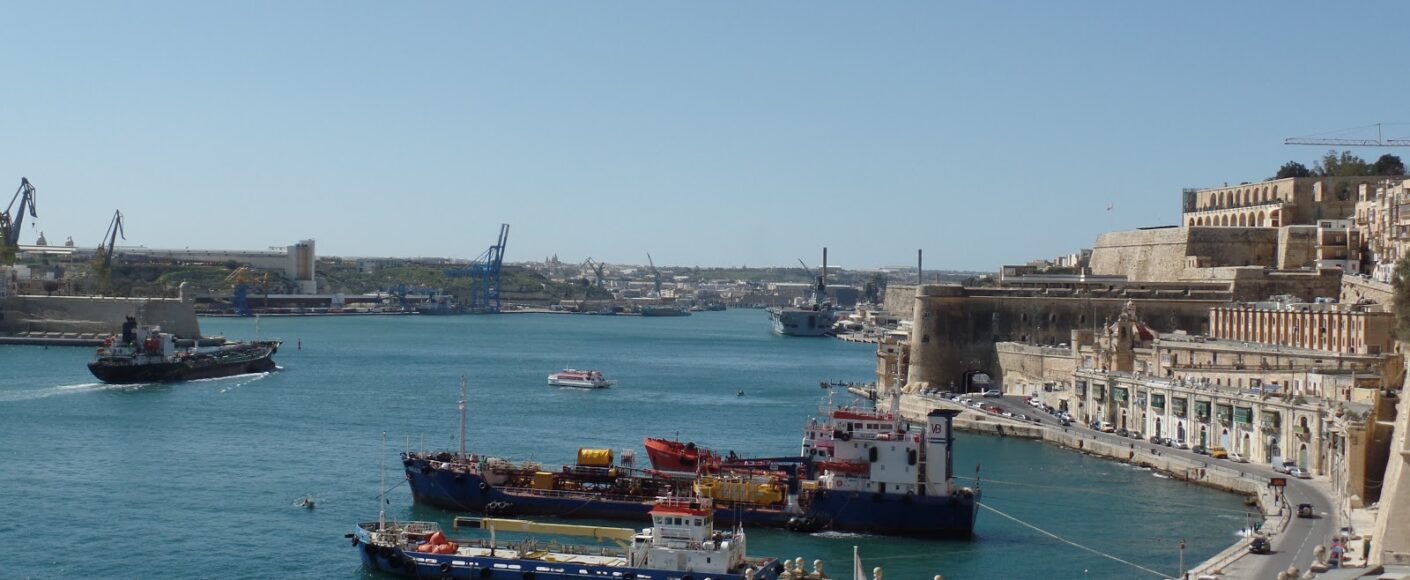Malta’s Grand Port: history, geography and shipping

Malta’s Grand Harbour: Malta, known for its picturesque landscapes, beautiful beaches and rich history, also hides a hidden treasure – the Grand Harbour. It is not only a Maltese national treasure, but also a key seaport that has played a strategic role in the Mediterranean for centuries. In this article we will discover the history, geography and significance of the Grand Port of Malta.
Geography of the Grand Port
The Grand Harbour is located on Malta’s east coast and cuts into the mainland for about 3.6 kilometers. Its elongated shape runs from northeast to southwest. The northwestern coast of the bay is the Sciberras peninsula, on which lie Malta’s capital, Valletta, and the town of Floriana. The southeastern coast is more varied and full of bays that are separated by finger-like peninsulas. These creeks are Rinella Creek, Kalkara Creek, Dockyard Creek and French Creek. In the area of these bays are the cities of Kalkara, Birgu (Vittoriosa), Isla (Senglea), Bormla (Cospicua) and Paola. At the northwestern end of the bay lies the town of Marsa, which includes two bays, Il-Menqa and Marsa Creek. The mouth of the Grand Port into the Mediterranean Sea is about 400 meters wide and surrounded by fortifications such as Fort Saint Elmo in Valletta and Fort Ricasoli in Kalkara.
The depth of the Grand Harbor is mostly more than 10 meters along most of its length. The greatest depth, at 23 meters, is at the height of Fort Saint Angelo in Birgu. A 13.7-meter-deep channel has been created in the western part of the port, which leads to the shores in Marsa. Only Rinella Creek has a much shallower depth, not exceeding 5 meters, with a depth of only 2 meters in the eastern part.
Seaport
The Grand Port is Malta’s main passenger port and the second largest commercial port on the island after Malta Freeport. Thanks to its natural formation and breakwaters, the port can be used all year round and at any time of the day or night, regardless of weather conditions.
The Grand Port passenger terminal, managed by Valletta Cruise Port, covers an area of 48,000 square meters. It includes nineteen historic buildings that are more than 250 years old and were built by Manuel Pinto de Fonseca. Valletta Gateway Terminals Ltd is a company that operates on the port’s two wharves: Deep Water Quay with a quay length of 488 meters and Laboratory and Magazine Wharves with a quay length of 630 meters. The port has an annual handling capacity of up to 200,000 TEUs. In 2009, it handled 294,795 passengers, down 20% from 2008, mainly due to the financial crisis. In addition, the port handled 5019 vessels registered in Malta, including 2311 yachts, 784 fishing vessels, 1261 dry cargo vessels and 456 liquid cargo vessels. In 2017, the number of passengers served was 778,596.
Malta’s Grand Port: history
The Grand Port has been used since ancient times. It has been controlled by various civilizations over the centuries, including the Romans and Phoenicians. Around 1100 it was called Castrum Maris. In 1283, a naval battle took place here. In 1530, the port became the property of the Order of the Knights of Malta, which rebuilt and strengthened it. In 1565, Fort Saint Angelo in the harbor area was a defense site during the Great Siege of Malta.
The British took control of the port in the 19th century, and from 1912 to 1979 it served as the headquarters of the Mediterranean Fleet, first under the name HMS Egmont and later as HMS St Angelo. In recent years, restoration work has been carried out on Fort St. Angelo, and it is now open to the public. During the war shipyard period, the port also had its own shipyard, which closed in 1958. However, shipyard docks are now being used to repair civilian ships.
Malta’s Grand Port is not only a place with deep historical roots, but also a key point in the island’s shipping and transportation today. Its beautiful scenery and rich history attract both tourists and maritime history buffs.
See also: https://lugia-boats.com/malta-klejnot-morza-srodziemnego-historia-gospodarka-i-transport/




